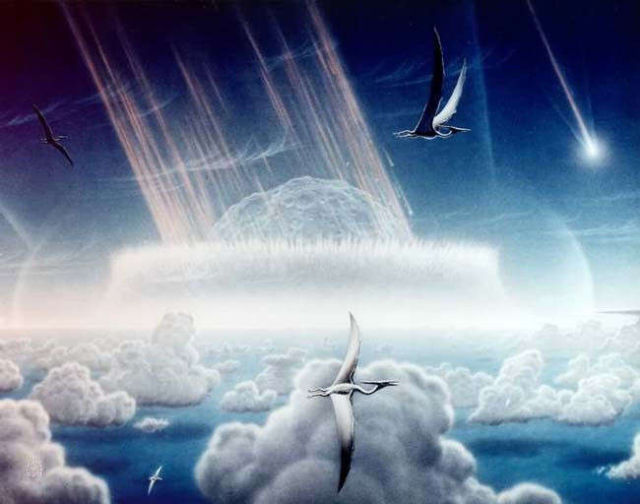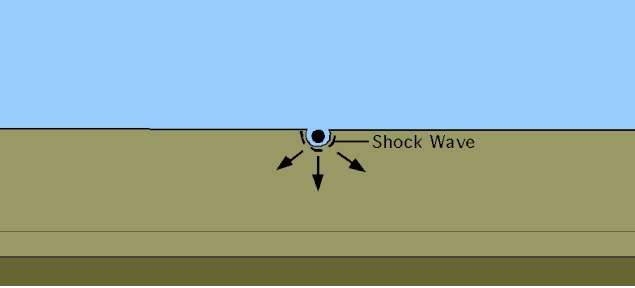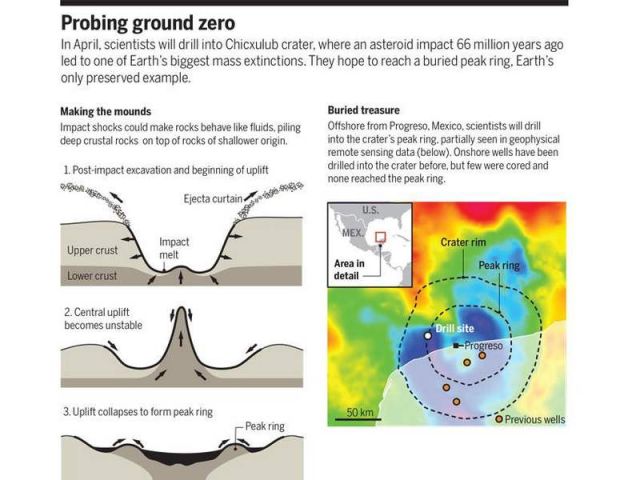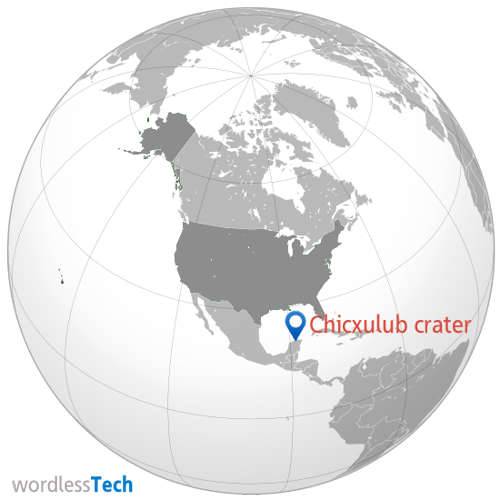Scientists plan to drill into the impact crater, made by a giant asteroid that killed the dinosaurs, off Mexico’s Yucatan Peninsula.
The scientists will drill 4,900 feet beneath the ocean floor, to take rock core samples of the remnants of the killer asteroid.
Above image credit NASA/Donald E. Davis
The asteroid slammed into the Gulf of Mexico 65.5 million years ago, creating the Chicxulub crater, wiping out the dinosaurs and many other forms of life.
Scientists hope that by collecting rock samples, they may be able to find out how life came back after the deadly impact.
Image credit wikimedia
Dinosaurs and other reptiles ruled the planet for 135 million years. That all changed 65.5 million years ago when a 9-mile-wide asteroid slammed into the Earth. The event set the stage for mammals and eventually humans to take over.
Sean Gulick, a researcher at The University of Texas at Austin Institute for Geophysics (UTIG), and a team of scientists from the U.K. and Mexico are working to change that. The team is planning to take the first offshore core samples from near the center of the impact crater, which is called Chicxulub after the seaside village on the Yucatán Peninsula near the crater’s center.
(DIAGRAM) V. ALTOUNIAN/SCIENCE; (MAP) SEAN GULICK, UNIVERSITY OF TEXAS
via CNN
source









Leave A Comment